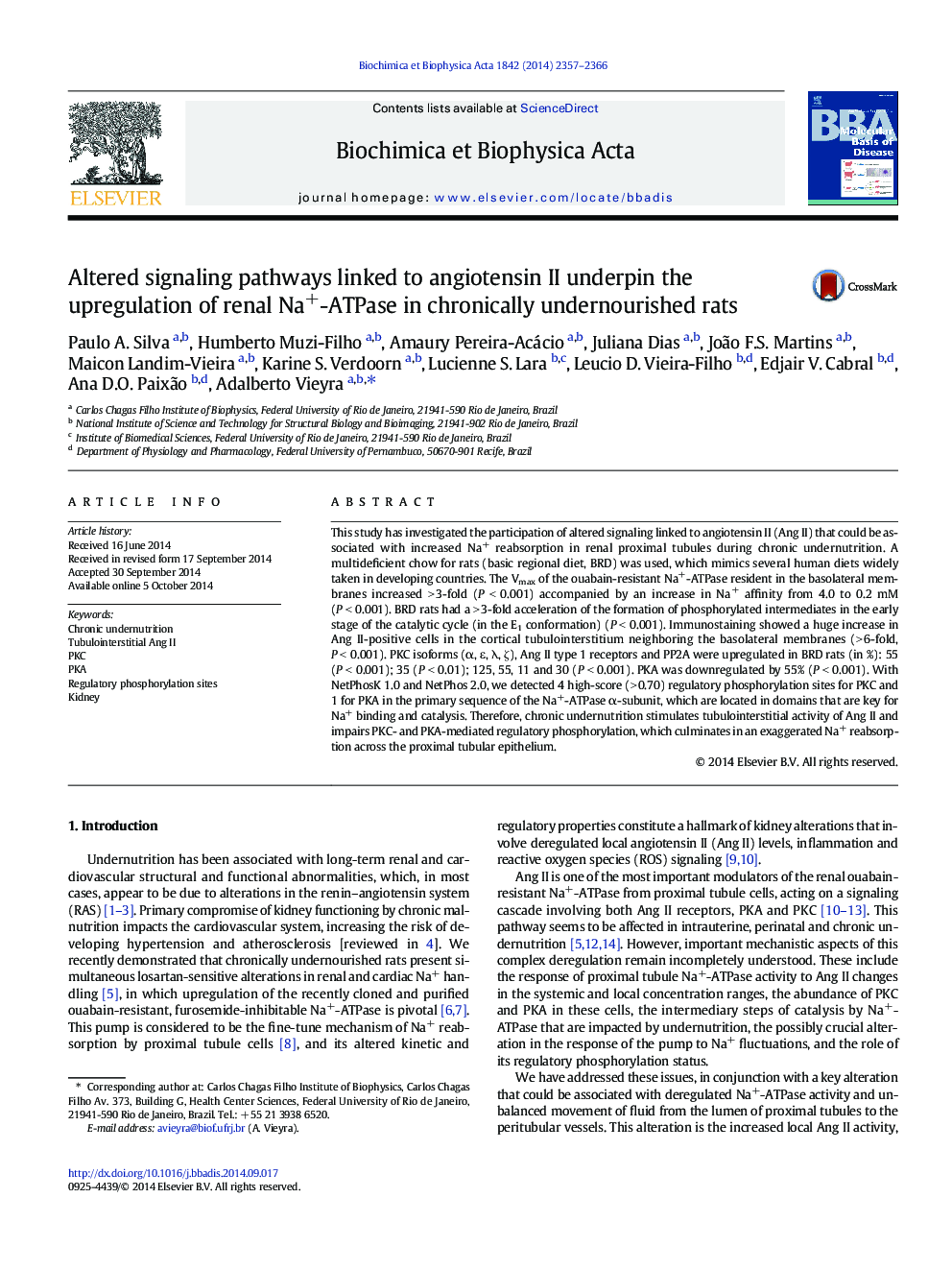| Article ID | Journal | Published Year | Pages | File Type |
|---|---|---|---|---|
| 8259963 | Biochimica et Biophysica Acta (BBA) - Molecular Basis of Disease | 2014 | 10 Pages |
Abstract
This study has investigated the participation of altered signaling linked to angiotensin II (Ang II) that could be associated with increased Na+ reabsorption in renal proximal tubules during chronic undernutrition. A multideficient chow for rats (basic regional diet, BRD) was used, which mimics several human diets widely taken in developing countries. The Vmax of the ouabain-resistant Na+-ATPase resident in the basolateral membranes increased > 3-fold (P < 0.001) accompanied by an increase in Na+ affinity from 4.0 to 0.2 mM (P < 0.001). BRD rats had a > 3-fold acceleration of the formation of phosphorylated intermediates in the early stage of the catalytic cycle (in the E1 conformation) (P < 0.001). Immunostaining showed a huge increase in Ang II-positive cells in the cortical tubulointerstitium neighboring the basolateral membranes (> 6-fold, P < 0.001). PKC isoforms (α, ε, λ, ζ), Ang II type 1 receptors and PP2A were upregulated in BRD rats (in %): 55 (P < 0.001); 35 (P < 0.01); 125, 55, 11 and 30 (P < 0.001). PKA was downregulated by 55% (P < 0.001). With NetPhosK 1.0 and NetPhos 2.0, we detected 4 high-score (> 0.70) regulatory phosphorylation sites for PKC and 1 for PKA in the primary sequence of the Na+-ATPase α-subunit, which are located in domains that are key for Na+ binding and catalysis. Therefore, chronic undernutrition stimulates tubulointerstitial activity of Ang II and impairs PKC- and PKA-mediated regulatory phosphorylation, which culminates in an exaggerated Na+ reabsorption across the proximal tubular epithelium.
Related Topics
Life Sciences
Biochemistry, Genetics and Molecular Biology
Ageing
Authors
Paulo A. Silva, Humberto Muzi-Filho, Amaury Pereira-Acácio, Juliana Dias, João F.S. Martins, Maicon Landim-Vieira, Karine S. Verdoorn, Lucienne S. Lara, Leucio D. Vieira-Filho, Edjair V. Cabral, Ana D.O. Paixão, Adalberto Vieyra,
